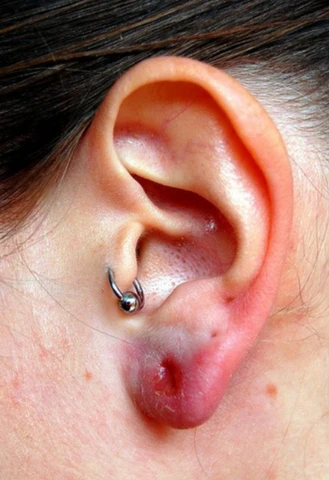Understanding Nickel Allergy
Introduction Nickel allergy is a prevalent trigger of allergic contact dermatitis, a condition characterized by an itchy rash that emerges when skin comes into contact with a typically non-irritating substance.
Common Associations While often linked to jewelry like earrings, nickel is also present in numerous daily objects, including coins, zippers, eyeglass frames, cosmetics, detergents, and various electronics such as cellphones and laptops.
Development and Management Developing a nickel allergy may require continuous or extensive exposure to nickel-bearing items. Although treatments can alleviate the symptoms, once a nickel allergy is established, you’ll remain perpetually sensitive to the metal and must steer clear of it.
Symptoms Nickel allergy symptoms, which constitute an allergic reaction known as contact dermatitis, generally commence a few hours to days post-exposure and can persist for 2 to 4 weeks. Typically, symptoms manifest at the point of contact with nickel but can occasionally spread elsewhere.
Signs of Nickel Allergy:
- Skin rash or bumps
- Intense itching
- Skin redness or color changes
- Dry skin patches akin to burns
- In severe instances, blisters and oozing fluid
Medical Consultation Consult a physician if you encounter an unexplained skin rash. If you’re already diagnosed with a nickel allergy and believe you’re experiencing a reaction to nickel, apply previously recommended over-the-counter remedies and home treatments. Should these measures prove ineffective, or if you suspect an infection (indicated by increased redness, warmth, pus, or pain), seek medical attention immediately.
Causes The precise origins of nickel allergy are uncertain. Like other allergies, it arises when the immune system mistakenly deems nickel as a threat. Once sensitized to an allergen, in this case, nickel, your immune system remains perpetually reactive to it, leading to allergic responses upon contact.
Exposure Sources Nickel exposure can stem from various sources, including:
- Body piercing jewelry
- Other jewelry pieces like rings, bracelets, necklaces, and clasps
- Watchbands
- Clothing fasteners (zippers, snaps, bra hooks)
- Belt buckles
- Eyeglass frames
- Coins
- Metal tools
- Cellphones
- Keys
- Military dog tags
- Chalk
- Medical devices
- Electronic devices (laptops, tablets, e-cigarettes)
Risk Factors Factors that may heighten the risk of developing a nickel allergy encompass:
- Ear or body piercings, given nickel’s prevalence in jewelry.
- Occupations involving constant nickel exposure, such as metalworking.
- “Wet work” roles, where exposure to nickel occurs through sweat or frequent water contact, affecting bartenders, certain food industry workers, and domestic cleaners.
- Professions like metalworking, tailoring, and hairstyling also carry an increased risk.
Remember, avoiding nickel and managing symptoms effectively is key to living comfortably with a nickel allergy.
Nickel Allergy: Gender, Genetics, and Metal Sensitivity
Gender and Nickel Allergy Women are more prone to nickel allergies compared to men, potentially due to a higher frequency of piercings. Recent research suggests that overweight women may face an even greater risk of developing this allergy.
Genetic Factors If nickel allergy is common in your family, you might be genetically predisposed to it, increasing your likelihood of sensitivity to nickel.
Cross-Reactivity with Other Metals Those with allergies to various metals might find themselves also allergic to nickel.
Prevention Strategies To prevent nickel allergy, it’s best to limit contact with nickel-containing items. For those already allergic, avoiding nickel is crucial to prevent reactions.
Avoiding Nickel Exposure Nickel is ubiquitous, making avoidance challenging. However, home testing kits can detect nickel presence in items.
Tips for Reducing Nickel Contact:
- Opt for hypoallergenic jewelry made from materials like nickel-free stainless steel, surgical-grade stainless steel, titanium, 18-karat yellow gold, or sterling silver.
- Ensure earring backings are also hypoallergenic.
- Select piercing studios that use sterile, nickel-free needles and provide metal content documentation for their jewelry.
- Substitute nickel items with alternatives like leather or plastic watchbands, plastic-coated zippers, and titanium frames.
- Create barriers between skin and nickel, using gloves or protective coatings like duct tape or Nickel Guard on items like buttons and tools. Clear nail polish may also shield against nickel but requires frequent reapplication.
By following these guidelines, individuals can significantly reduce their risk of nickel allergy reactions.


